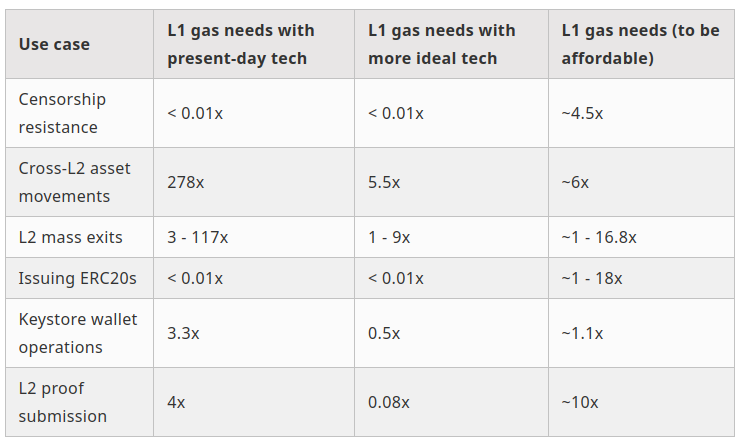Vitalik Buterin argues that an increase in Ethereum's L1 gas capacity is necessary to support transaction inclusion and application development when most activities occur in L2. In a new blog post, Buterin outlined calculations suggesting that, even if applications migrate to a Layer 2 solution, an expansion of approximately 10 times the L1 capacity will maintain critical network functionality.
Gas limits define the maximum amount of computational work that can be performed in a single block, and sets a cap on processed transactions and operations. Increased gas limits increase the capacity of the protocol, processing more calculation tasks per block, and handling more transactions and more complex operations while affecting fee dynamics.
Gas limits have recently increased by 20%
Buterin's analysis is based on the recent increase in L1 gas limits from 30 million to 36 million, which increases capacity by 20%.
Buterin said further increase could be a long-term benefit due to improved efficiency of Ethereum clients, reduced historical storage from EIP-4444, and adoption of final stateless clients . His argument constitutes a scaling argument by comparing current gas needs to a more ideal scenario in several use cases.
As reported by Buterin, censorship resistance remains a key feature. He demonstrated that bypass transaction, designed to overcome the potential censorship of the L2, costs around $4.50 at current gas prices. By scaling L1 capacity by about 4.5 times, these costs are reduced, ensuring effective transactions reach the blockchain quickly even under busy conditions. Similarly, cross-L2 assets movements, including large amounts of assets and NFT transfers, currently cost nearly $14 per operation.
Buterin's estimates show that the design has improved and has a scaling factor of about 5.5x to 6x, so such transactions could be performed at some of their costs, and for an ideal setup, $0.28 That's low potential.
Mass outlet from L2
Buterin's analysis extends to scenarios involving mass outlets from L2. An exit refers to an operation in which a user withdraws assets from a Layer 2 solution back into the Ethereum main chain (L1) and is usually protected during network disruptions or other emergencies.
He said that under current parameters, the outlets that require 120,000 gas per user could have 7.56 million to 32.4 million users over a period of one week to 30 days, depending on the roll-up design. I calculated it. Optimized protocols (reduced by cost per outlet operation to approximately 7,500 gas), significantly increases the number of users who can safely exit, supporting millions during periods of network stress and liquidity Or you can reduce the risk of security issues.
Addressing the issuance of tokens, Buterin observed that many new ERC20 tokens are on sale in L2. However, tokens issued in L2 can become vulnerable in the event of a hostile governance upgrade. This is a risk that will be mitigated by starting up on L1. He cited examples such as the deployment of railgun tokens with costs exceeding 1.6 million gas.
Even if these costs were reduced to about 120,000 gas, the cost per issue will remain close to $4.50, scaling up to 18 times more widespread and cost-effective token launches that meet lower target prices This means that a coefficient may be required.
The discussion also addressed operations tied to keystore wallets. Buterin estimated that a 3.3x increase in gas capacity could be required for a wide range of key updates, which assume 50,000 gas per operation, but increased efficiency reduced costs to around 7,500 gas. This requirement could then be reduced by nearly 1.1 times.
Similarly, frequent L2 certification submissions required to maintain modern interoperability between chains currently impose a significant cost of limiting the number of viable L2s. As advanced aggregation protocols could potentially be reduced per supply to approximately 10,000 gas, a scaling factor of approximately 10 times more economically viable to make regular L2-L1 updates economically viable. will be required.

In Buterin's calculations, despite most activities shifting to L2, maintain censorship resistance, enable efficient asset transfer, support mass exits, protect token issuance, and interoperability It emphasizes that maintaining robust L1 function is essential to promote.
As Buterin concluded, increasing L1 gas capacity offers value by ensuring basic blockchain operations are safe and accessible, even as network usage patterns evolve.
His analysis constitutes a clear argument for short-term scaling measures that can protect Ethereum's core functions, regardless of the long-term balance of L1 and L2 activities.
It is mentioned in this article



